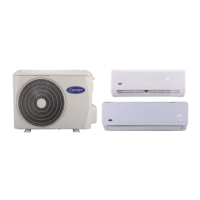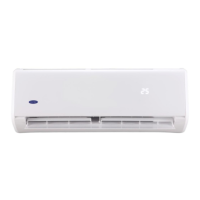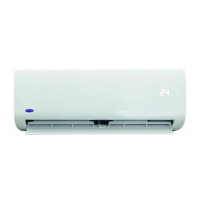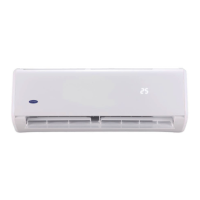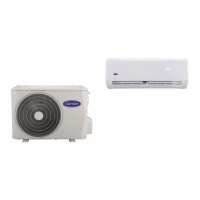10. Repairs to sealed components
10.1 During repairs to sealed components, all
electrical supplies shall be disconnected from the
equipment being worked upon prior to any removal
of sealed covers, etc. If it is absolutely necessary to
have an electrical supply to equipment during
servicing, then a permanently operating form of
leak detection shall be located at the most critical
point to warn of a potentially hazardous situation.
10.2 Particular attention shall be paid to the
following to ensure that by working on electrical
components, the casing is not altered in such a way
that the level of protection is affected. This shall
include damage to cables, excessive number of
connections, terminals not made to original
specification, damage to seals, incorrect fitting of
glands, etc.
Ensure that apparatus is mounted securely.
Ensure that seals or sealing materials have not
degraded such that they no longer serve the
purpose of preventing the ingress of flammable
atmospheres. Replacement parts shall be in
accordance with the manufacturer's specifications.
NOTE: The use of silicon sealant may inhibit the
effectiveness of some types of leak detection
equipment. Intrinsically safe components do not
have to be isolated prior to
working on them.
11. Repair to intrinsically safe components
Do not apply any permanent inductive or
capacitance loads to the circuit without ensuring
that this will not exceed the permissible voltage and
current permitted for the equipment in use.
Intrinsically safe components are the only types that
can be worked on while live in the presence of a
flammable atmosphere. The test apparatus shall be
at the correct rating.
Replace components only with parts specified by
the manufacturer. Other parts may result
in the ignition of refrigerant in the atmosphere from
a leak.
12. Cabling
Check that cabling will not be subject to wear,
corrosion, excessive pressure, vibration, sharp
edges or any other adverse environmental effects.
The check shall also take into account the effects of
aging or continual vibration from sources such as
compressors or fans.
13. Detection of flammable refrigerants
Under no circumstances shall potential sources of
ignition be used in the searching for or detection of
refrigerant leaks. A halide torch (or any other
detector using a naked flame)
shall not be used.
14. Leak detection methods
The following leak detection methods are deemed
acceptable for systems containing
flammable refrigerants. Electronic leak detectors
shall be used to detect flammable
refrigerants, but the sensitivity may not be adequate,
or may need re-calibration. (Detection equipment
shall be calibrated in a refrigerant-free area.)
Ensure that the detector is not a potential source of
ignition and is suitable for the refrigerant used. Leak
detection equipment shall be set at a percentage of
the LFL of the refrigerant and shall be calibrated to
the refrigerant employed and the appropriate
percentage of gas (25 % maximum) is confirmed.
Leak detection fluids are suitable for use with most
refrigerants but the use of detergents containing
chlorine shall be avoided as the chlorine may react
with the refrigerant and corrode the copper
pipe-work.
If a leak is suspected, all naked flames shall be
removed or extinguished.
If a leakage of refrigerant is found which requires
brazing, all of the refrigerant shall be
recovered from the system, or isolated (by means
of shut off valves) in a part of the system
remote from the leak. Oxygen free nitrogen (OFN)
shall then be purged through the system both
before and during the brazing process.
15. Removal and evacuation
When breaking into the refrigerant circuit to make
repairs or for any other purpose
conventional procedures shall be used. However, it
is important that best practice is
followed since flammability is a consideration. The
following procedure shall be adhered to:
remove refrigerant;
purge the circuit with inert gas;
evacuate;
purge again with inert gas;
open the circuit by cutting or brazing.
The refrigerant charge shall be recovered into the
correct recovery cylinders. The system
shall be flushed with OFN to render the unit
safe. This process may need to be repeated
several times. Compressed air or oxygen shall not
be used for this task. Flushing shall be achieved by
breaking the vacuum in the system with OFN and
continuing to fill until the working pressure is
achieved, then venting to atmosphere, and finally
pulling down to a vacuum. This process shall be
repeated until no refrigerant is within the system.
When the final OFN charge is used, the system
shall be vented down to atmospheric pressure to
enable work to take place. This operation is
absolutely vital if brazing operations on the
pipe-work are to take place.
Ensure that the outlet for the vacuum pump is not
close to any ignition sources and there is
ventilation available.
16. Charging procedures
